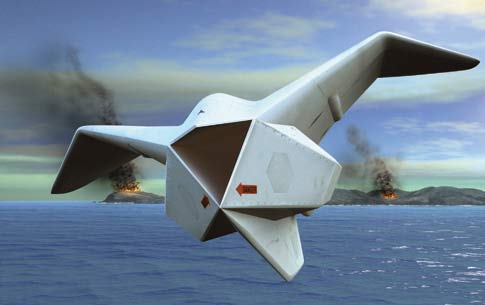The engineers at the Defense Advanced Research Projects Agency (DARPA) are working on an aircraft that’s capable of landing on the water and submerging beneath the waves.
DARPA hopes to design a vehicle able to hold 8 people with a flying radius of 1000 nautical miles and a submersible range of 12 nautical miles. The vehicle will not have deep diving abilities but rather will likely snorkel just under the surface.
Adventurer Steve Fossett had developed a test vehicle similar to the DARPA Submersible Aircraft.
Below is a video of a vehicle which could resemble the DARPA vehicle:
[ame="http://www.youtube.com/watch?v=hVtW4CP5YW8"]YouTube - Voyage to the Bottom of the Sea Flying Sub for FS 2004Pt II[/ame]
http://www.nydailynews.com/news/us_...look_out_james_bond_us_military_launchin.html
DARPA hopes to design a vehicle able to hold 8 people with a flying radius of 1000 nautical miles and a submersible range of 12 nautical miles. The vehicle will not have deep diving abilities but rather will likely snorkel just under the surface.
Adventurer Steve Fossett had developed a test vehicle similar to the DARPA Submersible Aircraft.
Below is a video of a vehicle which could resemble the DARPA vehicle:
[ame="http://www.youtube.com/watch?v=hVtW4CP5YW8"]YouTube - Voyage to the Bottom of the Sea Flying Sub for FS 2004Pt II[/ame]
http://www.nydailynews.com/news/us_...look_out_james_bond_us_military_launchin.html
The U.S. Military is seeking designs for a new weapon that could be in a James Bond movie - a flying submarine.
While Bond drove a Lotus that turned into a sub when it hit the water in "The Spy Who Loved Me," what the Defense Advanced Research Projects Agency, or DARPA, wants is far more ambitious.
Their specs call for a submersible flying machine capable of carrying eight men and their equipment a combination of 1,150 miles by air, 115 miles by sea, or 22 miles underwater - in less than eight hours. It must have the "stealth of a submarine" and be able to hide beneath the water's surface for up to three days to pick up the men after their "coastal insertion" mission is completed. "We are open to submissions from anywhere," DARPA spokeswoman Jan Walker said. "DARPA has a budget of $3 billion."



